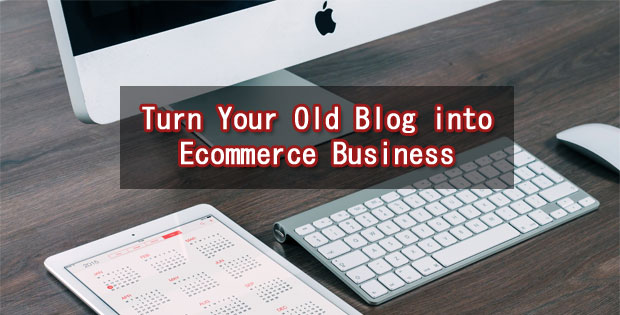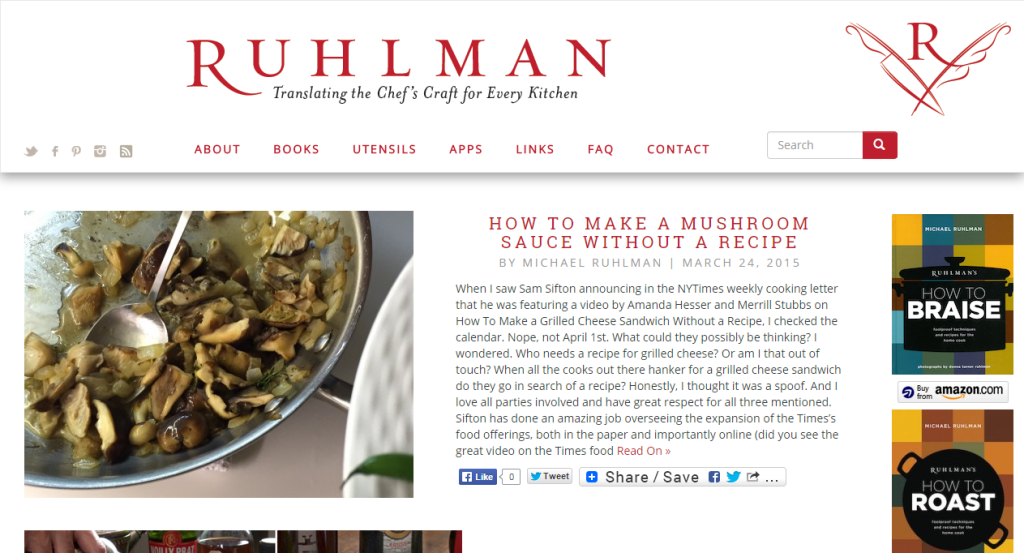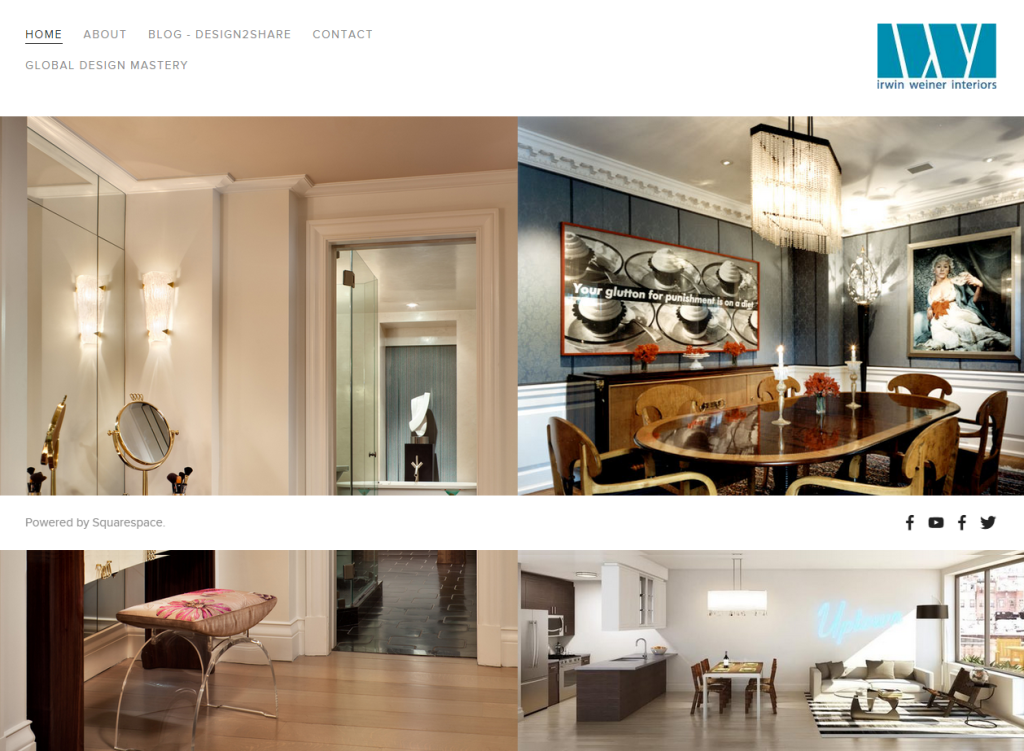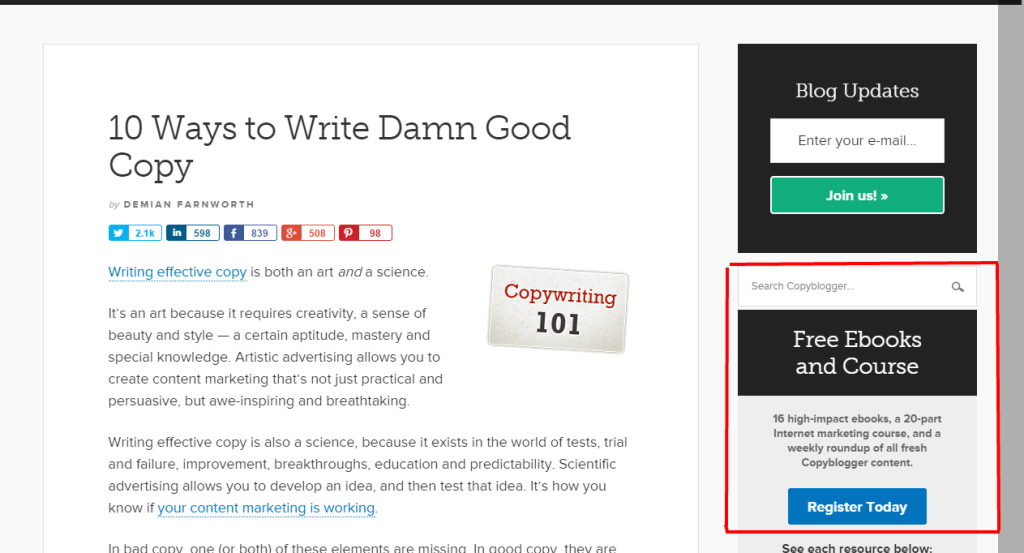Turn Your Old Blog into an E-commerce Business for Better Conversion
If you have an old blog post lying somewhere in the dark, gathering up dust, then it is time you think about turning it up into a unique ecommerce business.
For some time now, we have known that content marketing is a powerful marketing strategy that adds to one’s website in the World Wide Web. Fresh content with the right choice of topics along with good keywords could bring good traffic to your site. Other than that, you could establish your brand as a leading gamer among your competitors by bringing in valuable insights as an expert. This helps to cater to the needs of your target audience who might be in need of some professional advice and your blog is something they require to refer to.

Having a blog is said to generate more ROIs for a website but what if, your blog is not really bringing in all the traffic? Or is it that you have a successful blog platform that is generating more sales and you have thought of using it for your business? Kudos to you, if you have thought about it! You have come to the right place for advice. Read on to learn how to change your blogging strategy into an e-commerce story.
Why Converting a Blog Post into an E-commerce Site Will Help?
There are many advantages for a blogger when he/she starts utilizing the blog as an e-commerce platform. In other words, this brings in a two-way traffic flow for your online retail shop as a whole that in turn, is advantageous from three spheres of business.
Benefit for the Customer
- Customers can relate better to a well-written blog that helps them to interact with the human side of a company.
- Online visitors nowadays expect to find a blog section in a website. Not having one would make your site look incomplete.
- A website integrated with a blog section provides a seamless experience for the customer.
- Blogs help to build a sense of trust in a reader’s mind thus growing a strong customer- retailer bond.
Benefit for the Organization
- A good quality blog helps to set up your brand image in the market. This is because your target audience accesses your blogs online and knows that you are not just a service provider but also a consultant to whom they could turn to for help.
- When a target accesses a blog, he enters the company’s website. This brings him/her closer to the services that your retail shop provides. You can take advantage of this situation by influencing your customer with specific Call-To-Actions.
- If a retailer already hosts a website online and a separate blog, then integrating both of them would reduce the maintenance cost.
- You are promoting your service from both ways, i.e. –by fishing out organic search traffics as well as people who know you.
Benefits to a Website’s Rank
- Google loves sites that provide quality rich content and adding more content will simply bring your e-site more ranks.
- Blog posts having back links help to bring in more traffic to your site. This in turn adds up to your search engine results rank.
The Blog Monetization Trend So Far Among Blogger
Survey reports as of 2010 show approximately 44% bloggers to have engaged in this trend.
Check out some of these sites that use blogs to sell their products –
 blog.ruhlman.com
blog.ruhlman.com
Cookbook author, Michael Ruhlman uses his blog to sell kitchen related products.
 www.irwinweiner.com
www.irwinweiner.com
This home decoration website uses its blog ‘Design to Share’ to sell home accessories like lamps, vases, dishes, etc.
How Do You Start Monetizing Your Blog as an E-commerce Site?
There are several ways to look at. Let us take you through each of this process point by point –
#1 – Turning Your WordPress Blog Post into A WP Website
If you have a blog post platform in WordPress, then you can add a separate static page and configure it to the existing blog post thus making it look more like a website. It only takes some simple steps , so read on to learn how to do it yourself:
Step i – Go to the ‘Pages’ section located on the left hand side of your WP dashboard to add a new page as the home page.
Step ii – Label it as ‘Welcome’ and turn off the comment and the social share buttons from the settings. Publish it.
Step iii – Click on the ‘Pages’ section once more and ‘Add New’. Label this page as ‘Blog’ and publish it.
Step iv – Now click on the ‘Reading’ from the ‘Settings’, located on the WP Admin panel and change the ‘Front Page Display’. You can also get choose which pages you want to feature on the home page (i.e. the front page) and which pages on the blog page.
After you click on the ‘Save’ button located at the bottom, you would find the ‘Welcome’ page to appear as the main page of your blog site. You can edit to rename this page according to your choice. You would also notice a separate page titled – ‘Blog’ on the site, where all your blog posts are present.
Now you have a customized site for your blogs.
Or You Could Just Use Add-ons
That takes us to the next point…
#2 – Integrating Blog Posts With Plug-ins
You could even add plug-ins to your WordPress blog posts and start an e-store in no time. Make your blog post interactive by adding features like promotional ads, shopping carts, product information, CTAs, etc. While there are many such plug-ins available to turn your blog post into an online store, here are some plug-ins that I prefer the most and think your should know about:
-
WooCommerce
If you are looking for a plug-in that would involve with helping you set up product information along with the ability to differentiate it from your pages and posts, then Woo Commerce is the best. Whether it is the payment gateway, product inventory management, shipping of good with different selling options, notification alerts regarding any purchase and transactions made or providing discounts and coupons, Woo Commerce plug-in has all the features to turn your blog into an interactive and informational e-store.
-
WP e-commerce
You can configure your WP blog post with features like PayPal integration, language, localization, tax rates; manage your brand and product information via the WP ecommerce. Easy to install and set-up, this WP plug-in can add up a good shopping experience for readers visiting your blog for more information.
-
OIO Publisher
While the above two plug-ins help to cover most of the features that one would require to make one’s blog into an effective ecommerce site, for the third one I thought of including an ad manager WP plug-in name. With this php script ad manager, you can take control of the advertisement on your website. You can upload images, information and even pay directly on the WP website. There are several advertisement module names like Google Checkout, PayPal, Alertpay that provide advertisers with several payment method. Other features include providing advertisers with daily ad reports, inventory ad listing on the private banner of the advertisement marketplace, running of affiliate programs for example with Amazon, ebay, Groupon etc. and keeping a record of accomplishment made for the number of clicks, impressions as well as CTR rates made for every purchase from your site.
In case you are looking for other ways to optimize your blog for commercial purpose then follow these…
…Other Methods to Monetize Your Blog Like an E-commerce Site
A. Webinars / Free Ebooks
Talking about your product can help people related to it. There are a number of ways to promote your service and one of them is through webinars or e-books. This helps you to utilize the blog space to help people out with useful information that would lead them to build up a sense of trust on your brand.
But how do you monetize your blog using webinars/free ebooks?
At the end of your blog, you could ask them to sign up for more information or provide an option for free trial to let them be their own judge to decide whether to sign up.
Copyblogger puts up an interesting example on this that you can look into for study –
 www.copyblogger.com
www.copyblogger.com
B. Special Promotions
Engage more target audience to your blog through special promotions like discounts and gift vouchers. You can collaborate with other companies to send out a joint promotion just in case there is a brand; who’s product you feel can turn out to be useful for the customer when used together. This kind of marketing initiative however depends largely on the nature of promotion that you run.
C. Case Studies
Inclusion of case studies are a great way to engage more audience, since these are plain facts that speak the truth. Inclusion of case studies into blogs helps to build a sense of authority and gives out the impression of your expertise in the respected field. People would learn what you did in your project and you can add one or more testimonials as a kind of proof.
When including case studies, ensure that what you include facts from which other people will derive benefit. Link up these case studies to your blog’s homepage or sidebar to grab more attention.
D. Emails
Emails are a great way to collect target ids. You can integrate an email box along the side your blog post. Look at the different ways you can integrate an email into your blog to get more target audience:
Pop Up – Use a tool that can add this pop-up email to your blog post. A pop-up email can engage a maximum of 1 to 3 percent of the readers.
Sidebar – Adding an email box, along the sidebar of your blog post can help to convert approximately .5 to 2 percent of the blog readers into email subscribers.
Blog Post – You can add an email box at the end of your blog post and this can generate approximately .75 to 2 percent of email subscribers.
You can set up an email drip system after you have collected the emails from the different readers. An email drip system can send as many as seven mails to customers. A good email drip system can bring about 5 percent of target leads. If you have managed to collect 100 mails, 5 out of them is bound to convert into customers.
E. Landing Pages
Create a landing page for your blog that will help people entering your blog page turn into subscribers. This landing page will play the role of a conversion tool to turn your blog readers into dedicated followers to learn more about your brand and the services you provide. You can even add CTAs to the landing page, asking people to subscribe for more information.
F. Ads That Call To Action
Customize your blog with CTA ads that would draw a reader’s attention throughout the entire page length of the blog post. Look at how to use ads effectively in your blog for better conversion:
Static ads – Static ads are good but try using them just like Neil Patel does.
I thought this to be a good example for some inspiration. By the way, that advertisement is said to draw about .94% clicks.
Scrolling ads – I find this annoying but this kind of ads constantly draws my attention towards it, no matter how long I keep scrolling down a blog page. It’s annoying but at the same time attention seeking – ideal for placing an ad on the blog page.
There are several other ways to make good use of your old blogs for e-commerce purpose. You can do a little bit of research more on this if you are looking for more specific ways in association to your genre. However, make sure that your blog has at least 20,000 readers following it before you think of investing on these above strategies to use your blog more like an e-commerce site.
- Meet Top 5 Indian Bloggers to Find Inspiration for Your Own Blogging Journey - July 30, 2019
- Why Use DRM Media Converter and Spotify Music Converter Only - May 24, 2019
- SendPulse – For Email Marketing Services with Atomic Results - November 8, 2017






